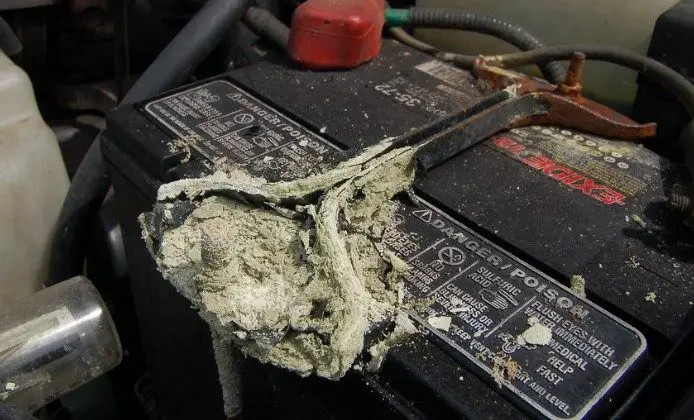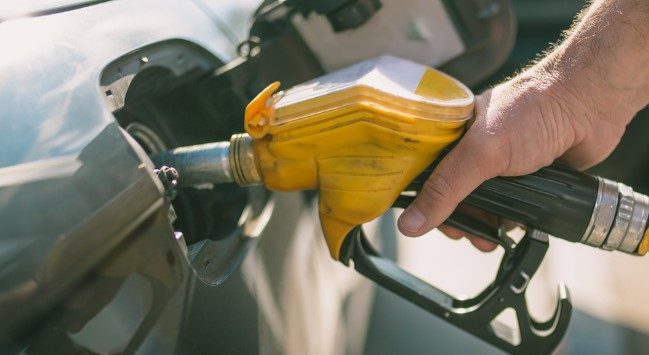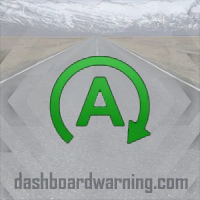If your Jeep has a start-stop system, you may have noticed a warning light on the dash that looks like a car with a key. This light is important as it indicates that the start stop system is active and working as intended. Keep reading to learn more about the Jeep start-stop system and what the warning light means.
What is the Jeep Start Stop System Warning Light?
The Jeep Start Stop System Warning Light is a light that comes on when the Jeep's start/stop system is engaged. This system is designed to save fuel and reduce emissions by automatically shutting off the engine when the vehicle is idling. The warning light reminds drivers to take their foot off the brake pedal when not moving so the system can engage and save fuel.
Also recommended: Jeep Compass Warning Lights
What Causes the Jeep Start-Stop System Warning Light to Come On?
A few reasons can cause the Jeep Start Stop System Warning Light to come on. One possibility is that there is an issue with the battery. Another possibility is that there is an issue with the starter or alternator. If the light comes on, it is important to have the vehicle checked by a qualified mechanic to diagnose and resolve the issue.
Battery Issue (Amber/Flashing Amber Warning Light)

Regarding the intricate inner workings of any Jeep, two vital batteries hold sway - the primary and the auxiliary. An illuminated Jeep Start Stop System indicator light often points a finger at the extra battery, signaling a malfunction.
Reasons
Within this predicament of auxiliary battery failure, one encounters an array of culprits:
- Wear and tear that silently erodes battery life.
- A misguided displacement of the battery.
- An incorrectly sized battery that needs to fit.
- The entwined woes of dirty, worn battery cables.
- The perils of excessive electrical accessory usage.
- Battery cables were improperly adjusted.
- The overarching shadow of a faulty battery.
- Sometimes, an auxiliary battery, originally placed for a specific purpose, languishes unused and ultimately succumbs to deterioration.
Solution
The remedy for an ailing auxiliary battery lies in a systematic battery replacement process:
- Step 1: Embarking on this journey, one must grapple with the challenge of accessing the elusive auxiliary battery beneath the fuse box. It conceals two 10mm bolts at its zenith, necessitating their removal with the aid of a bolt extractor. Yet, another 10mm bolt lies nestled within the battery's confines, awaiting liberation.
- Step 2: The subsequent phase entails the removal of the fuse box cover, held in place by four 7mm bolts, susceptible to the same extractor. A contingent of numbered 10mm bolts dwells within this alcove, aligned along one flank. These six bolts must also be delicately coaxed away with the trusty bolt extractor. Prudence dictates the careful preservation of these bolts, observing their numerical order.
- Step 3: Post-bolt removal, four tabs grace each of the four sides of the fuse box. A judicious nudge from a screwdriver sets them free, ensuring all connections at their rear part company are with due care. The ensuing discoveries reveal two 10mm bolts and one 7mm bolt. Ultimately, the spotlight falls upon the last quartet of 10mm bolts, leading to the prized location of the battery.
- Step 4: The battery must be gingerly extracted from its housing at this juncture. If the new battery lacks posts, use the E6 socket to detach and install the posts onto the new battery.
- Step 5: With the new battery snugly in place, reassemble the battery cover, ensuring the orderly return of all previously removed bolts. Beneath the fuse, order reigns supreme - the connection sequence unfurls in shades of blue, white, gray, and black.
The numbered bolts, each occupying its rightful place, seal the deal. Your successful battery replacement mission stands accomplished. On occasion, the Jeep Start Stop System not working may exhibit resistance to battery charging, warranting a thorough understanding of this particular scenario.
Read also: C0561-71 Traction Control Code
Spark Plug Issue

An ailing spark plug unfurls its tribulations through the stop/start system jeep, casting an amber or flashing warning light. Concurrently, symptoms such as diminished fuel efficiency, lackluster acceleration, rough idling, and arduous starts come to the fore.
Reasons
Several factors can conspire to thrust a spark plug into disarray:
- The use of substandard wire leads to spark plug damage.
- A fuel mixture imbued with an overabundance of air or fuel or beset by carbon fouling.
- The insidious influence of engine oil leaks instigated the demise of spark plugs enshrouded in grease and oil.
- Coolant leaks, clandestine saboteurs of spark plug integrity.
- The occasional misstep with fuel additives, such as octane or fuel injector cleaner.
- The perilous realm of overheated spark plug tips is a crucible for spark plug deterioration.
Solution
In most instances of ailing spark plugs, replacement emerges as the panacea. Fortuitously, a visit to the workshop can be off the cards. Armed with the following procedural insights, you can single-handedly navigate the path to spark plug rejuvenation:
- Step 1: Initiate the process by disengaging all electrical ties with the ignition coil. Prudence dictates caution at this juncture as spark plugs beckon. Remove the ignition coil with care.
- Step 2: The next chapter unfolds with compressed air, dispelling any lingering residue or impurities within the spark plug tubes.
- Step 3: With due diligence, unscrew the spark plugs. Employ a ratchet with a spark plug socket to facilitate this delicate task.
- Step 4: Employ a gap plug and gauge to calibrate the gaps on the new spark plugs, meticulously adhering to the owner's manual.
- Step 5: Install the new spark plugs and tighten them with a torque wrench. The reinstallation of the ignition coil and the restoration of all electrical connections signify the journey's end.
To mitigate future spark plug issues, heeding the counsel of experts stands paramount. Opt for spark plugs fashioned from copper, platinum, or double platinum, thus ensuring enduring quality. Keeping a vigilant eye on the FCW sensor cleaning process also merits consideration.
Fuel Problem

Fuel-related conundrums often beset Jeep Wranglers, heralded by the service stop/start system indicator light Jeep Cherokee. Telltale signs manifest as plaintive whining emanating from the fuel tank, challenging Jeep initiation, or an insidious absence of power.
Once such issues are identified, prompt rectification becomes imperative. However, a comprehensive understanding of the underlying fuel quandaries is essential before proceeding to resolution.
Reason
Fuel disorders within the realm of Jeep are typically attributed to:
- A clogged fuel injection system.
- The specter of clogged or leaking fuel lines.
- The encumbrance of a clogged fuel filter.
- Troubles afflicting the fuel pump.
- The inadvertent infusion of incorrect gasoline.
Solutions
A stepwise journey toward resolution unfolds as follows:
- Step 1: The initial checkpoint thoroughly examines the fuel tank. This reservoir, tasked with housing the vehicle's lifeblood, must be able to exchange air as fuel depletes and temperature fluctuates. Ensure the seamless operation of your fuel tank.
- Step 2: If fuel scarcity is the root cause, delve into the intricacies of engine deprivation. Ascertain whether the lack of engine gusto stems from electrical malfunctions, fuel pump issues, or leaks. Without such culprits, refill the fuel tank to the requisite level.
- Step 3: The saga continues with a meticulous examination of fuel delivery, gauging the adequacy of the fuel passing through the system. Should any deficiency arise, scrutinize the pressure and volume while keeping a watchful eye on the amperage of the fuel pump.
- Step 4: At times, the fuel pump may exhibit wayward tendencies. In such dire straits, the sole recourse is the replacement of the fuel pump. While appearing daunting, this endeavor follows a well-trodden path outlined in the owner's manual.
- Step 5: Vigilance regarding fuel quality remains paramount. Verify the compatibility of the fuel in use with your vehicle's requirements, making necessary adjustments to the fuel level.
Beyond the gamut of causes illuminated herein, additional culprits include:
- The faulty starter motor.
- A malfunctioning brake pedal switch.
- A wayward transmission range sensor.
- A vehicle trapped in the throes of an erroneous gear selection.
Each presents its unique challenges and warrants a tailored approach to resolution.
See also: Jeep Code U1411
How to Fix the Jeep Start Stop System Warning Light

If your Jeep's start-stop system warning light is on, it means there is a problem with the system. Here's how to fix it:
- First, check the start-stop system fuse. If it is blown, replace it with a new one.
- Next, check the start-stop system switch. If it is defective, replace it with a new one.
If the problem persists, take your Jeep to a qualified mechanic for further diagnosis and repairs.
See also: Jeep Wrangler Warning Lights
If you see the Jeep start-stop system warning light, there is a problem with the start-stop system, which needs to be serviced. This system is designed to save fuel and reduce emissions, so keeping it in good working condition is important. If you're unsure what to do, take your Jeep to a qualified mechanic or dealership for diagnosis and repair.
See also: 2006 Jeep Grand Cherokee 3.7 Misfire Problem
What does a stop-start warning light mean?
The Auto-Start-Stop indicator illuminates green when the engine stops, flashing amber and displaying a message when you need to take action. The Auto-Start-Stop indicator is out of order if inspired with a strikethrough or unavailable.
Why does my Jeep say start-stop " is not ready?
If your car shows that it requires a charge, but you have no other explanation, it might be time to take the charger out of it and let the battery discharge.
Can you turn off stop-start on Jeep?
If you want your engine to start and stop at stoplights, push the auto-start-stop button to disable this feature. We all agree that being forced to do it manually is a nuisance.
Can I disable Start-Stop to be turned off permanently?
Fortunately, some automakers have compromised regarding start-stop, and there are other means of turning it off when you don't want it to work. Although clickable options are unavailable, start-stop is implemented differently in most models.
Was this page helpful?





I recently read an article on Jeep's Start Stop System and it was very informative. I found the explanation of how the system works to be particularly helpful in understanding its benefits. The system helps reduce fuel consumption, but also reduces emissions by shutting off the engine when the car is stopped at a traffic light or in stop-and-go traffic. This makes me feel better about driving my own Jeep knowing that I am helping make a difference for the environment!
but are we really helping the environment by abusing a vehicles starting system, how much is saved vs long term effects. Yes agreed in LA rush hour but the typical stoplight is a few seconds. Im just glad my corvette doesnt have any stop/start system or i would lose coming off the pole